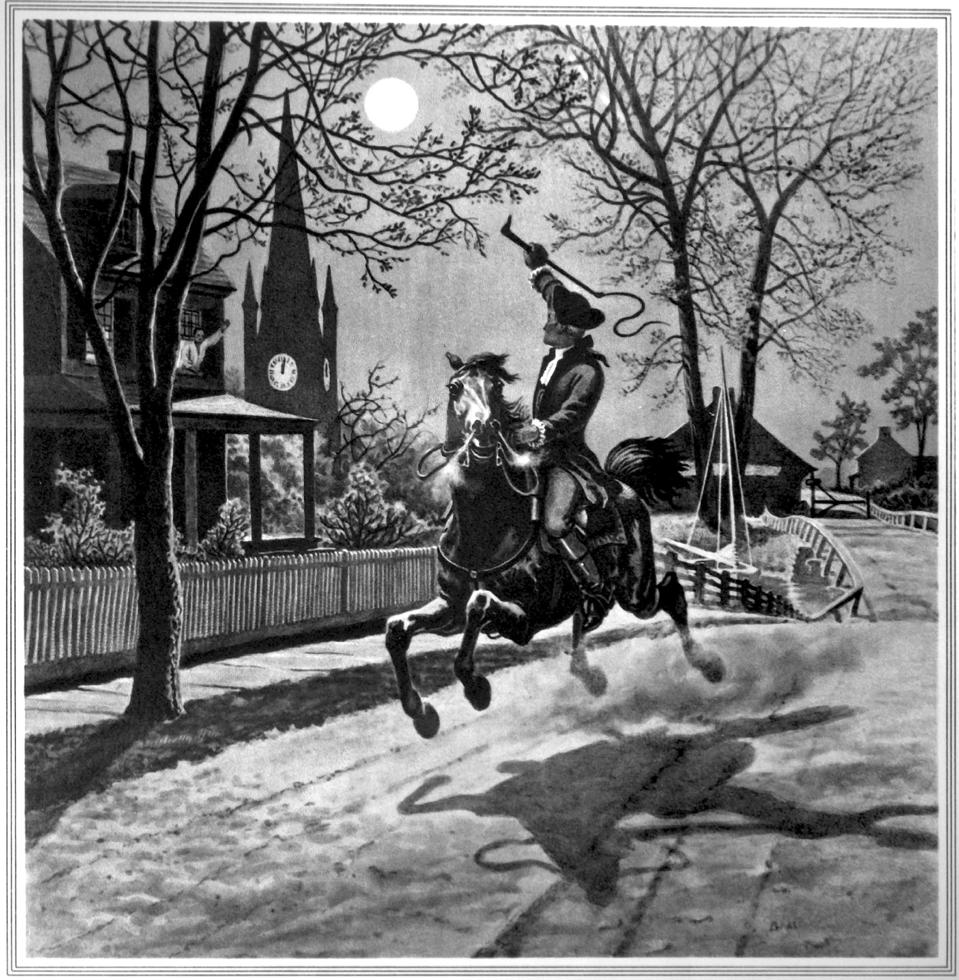Listen, my children, and you shall hear
Of the midnight ride of Paul Revere,
On the eighteenth of April, in Seventy-five.
These opening lines of “Paul Revere’s Ride” by Henry Wadsworth Longfellow are familiar to American schoolchildren. And so they—including me—grow up knowing the story of Paul Revere riding from Boston to Lexington to warn the Patriots that the British troops were headed their way. What followed the next morning were the “shots heard round the world,” sparking the American Revolution.
For most, however, Revere faded into quaint memory, a hero not quite forgotten but not well remembered. Fortunately, The Ride: Paul Revere and the Night That Saved America, by Kostya Kennedy, brings Revere to life fully, making him not simply a patriot for his time but a beacon for our time, too.
Bringing the legend to life
Revere was well-known in his time. Kennedy cites author Malcolm Gladwell’s depiction of Revere as a “connector,” that is, someone who met and mingled well with others, and so became a trusted resource. Everyone knew Paul Revere is a refrain that echoes throughout the book. How he became so well-known by everyone from leading Patriots like Sam Adams and John Hancock to British military officers, including General George Gage, is worthy of exploration. His traits are instructive to this day.
Connector. A respected tradesman, Revere became a Mason, a not uncommon association for Colonial Americans, including some of our Founding Fathers. He was loyal to his lodge and headed it. There, at the meetings, he became steeped in the patriot resistance to the Crown’s imposition of punitive taxes. Some of
Innovator. Revere’s father was an immigrant from France who embraced the Colonial American ways, becoming a silversmith, a trade he passed along to his son. Revere used that skill to teach himself to become an engraver and later a dentist, fashioning implants for his patients. He also learned to roll copper, becoming a bellmaker and munitions maker during the War of 1812.
Stamina. We know Revere for his 20-mile Ride that fateful night in April 1775, but Revere made many more rides, in particular, riding to and from New York and onto Philadelphia and back to Boston, a journey of 700 miles. He was carrying messages from Committees of Correspondence discussing how they would react to ever-tightening coercive acts by the Crown. As an expert horseman, Revere had the skills to keep a steady pace and stamina to ride night and day, stopping occasionally for an overnight rest and to switch horses.
Courage. During Revere’s Ride, he knew full well that someone like him could be stopped and detained and even slain if he were caught. And just outside Lexington, he was stopped by British officers who could have shot him on the spot. When they queried him, he told them exactly where he was going and why. Honesty was his trademark, and he was not about to lie, even to save himself. The officers instead stripped the bridle from his horse, Brown Beauty, leaving Revere to walk into Lexington rather than ride.
Citizen. Revere was a Patriot. He lived his love of country through service to the cause of Liberty, yes, but also to service to his community. He practiced this as a tradesman, a member of his church, and a lodge master—a true communitarian.
Legend for today
These traits Revere demonstrated made him a trusted man in a dangerous time. We can take from his example that we should be open to change, find ways to maximize our skills, and stand true to our values. “It was Revere at the start and center of it all,” writes Kostya Kennedy. It was Revere, booted and spurred, who raised the resistance, who helped deliver the first, fateful stand.”

